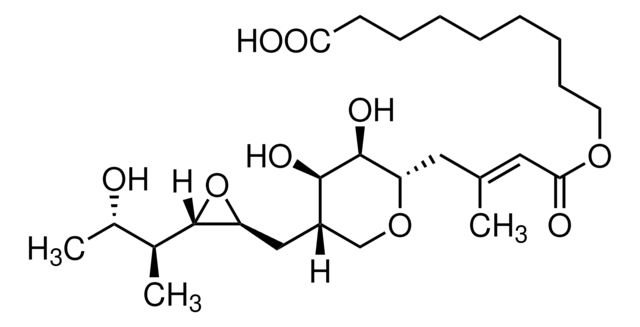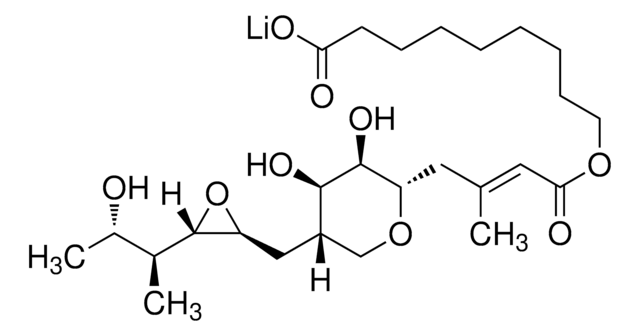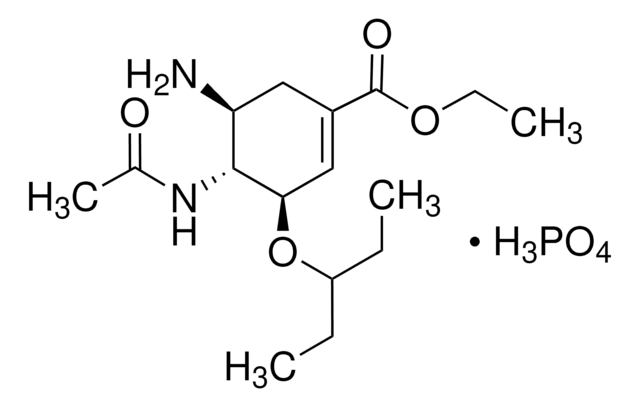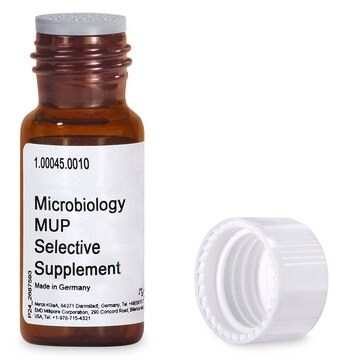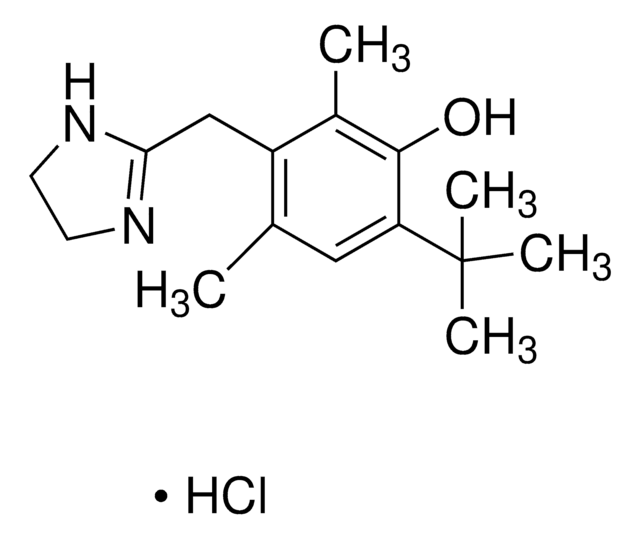M7694
Mupirocin
≥92% (HPLC), powder
Synonym(s):
5,9-Anhydro-2,3,4,8-tetradeoxy-8-[[3-(2-hydroxy-1-methylpropyl)oxiranyl]methyl]-3-methyl-[2E,8[2S,3S(1S,2S)]]-L-talonon-2-enonic acid 8-carboxyoctyl ester, BRL 4910A, Pseudomonic acid
About This Item
Recommended Products
Quality Level
Assay
≥92% (HPLC)
form
powder
optical activity
[α]/D -15.7 to -20°, c = 1 in methanol
color
white to tan
solubility
DMSO: ≥10 mg/mL
antibiotic activity spectrum
fungi
Mode of action
enzyme | inhibits
protein synthesis | interferes
originator
GlaxoSmithKline
storage temp.
room temp
SMILES string
[H][C@@]1(CO[C@@H](C\C(C)=C\C(=O)OCCCCCCCCC(O)=O)[C@H](O)[C@@H]1O)C[C@@H]2O[C@@]2([H])[C@@H](C)[C@H](C)O
InChI
1S/C26H44O9/c1-16(13-23(30)33-11-9-7-5-4-6-8-10-22(28)29)12-20-25(32)24(31)19(15-34-20)14-21-26(35-21)17(2)18(3)27/h13,17-21,24-27,31-32H,4-12,14-15H2,1-3H3,(H,28,29)/b16-13+/t17-,18-,19-,20-,21-,24+,25-,26-/m0/s1
InChI key
MINDHVHHQZYEEK-HBBNESRFSA-N
Looking for similar products? Visit Product Comparison Guide
General description
Application
- for kinetic assay
- to assess its resistance by performing turbidity assay
- to determine its antimicrobial susceptibility
Biochem/physiol Actions
Features and Benefits
Preparation Note
Storage Class Code
11 - Combustible Solids
WGK
WGK 2
Flash Point(F)
Not applicable
Flash Point(C)
Not applicable
Personal Protective Equipment
Regulatory Listings
Regulatory Listings are mainly provided for chemical products. Only limited information can be provided here for non-chemical products. No entry means none of the components are listed. It is the user’s obligation to ensure the safe and legal use of the product.
JAN Code
M7694-BULK:
M7694-100MG:
M7694-50MG:
M7694-VAR:
Certificates of Analysis (COA)
Search for Certificates of Analysis (COA) by entering the products Lot/Batch Number. Lot and Batch Numbers can be found on a product’s label following the words ‘Lot’ or ‘Batch’.
Already Own This Product?
Find documentation for the products that you have recently purchased in the Document Library.
Customers Also Viewed
Articles
Probiotics are defined as live bacteria with beneficial effects to the health of the host organism. Pimarily lactic acid bacteria (LAB) and bifidobacteria are used as probiotics, however certain yeasts and bacilli are also known to have positive effects
Our team of scientists has experience in all areas of research including Life Science, Material Science, Chemical Synthesis, Chromatography, Analytical and many others.
Contact Technical Service